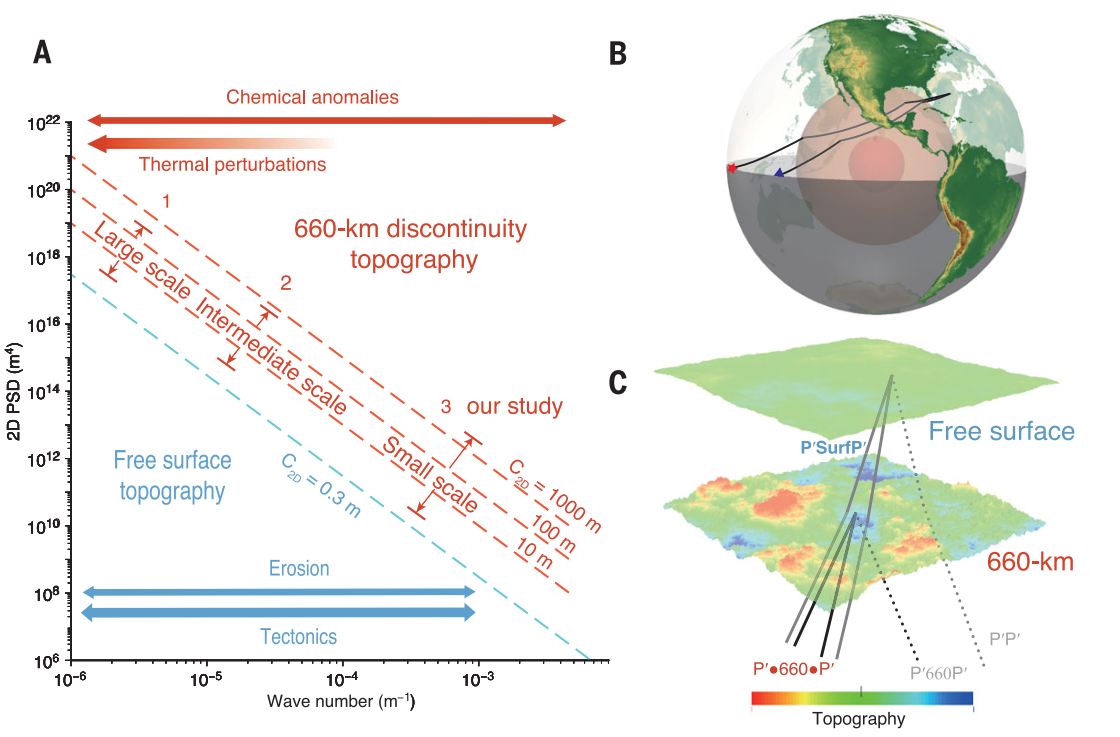
The theory of plate tectonics is the cornerstone of solid earth science, which depicts the basic kinematics of the lithosphere, while the mantle convection theory provides a dynamic basis for understanding the laws of plate motion. However, for a long time, the research on the convection mode of the mantle has been controversial.
A research team led by NI Sidao from the Institute of Geodesy and Geophysics (IGG), Chinese Academy of Sciences, with its collaborators discovered the 660 km seismic discontinuities scattered seismic waves phase of the asymmetric path for the first time. The study, published in Science, revealed the small-scale topographic variations of the 660-km and the 410-km seismic discontinuities and provided key evidence for the study of mantle convection mode.
Most of the intermediate- and large-scale topography results are interpreted as lateral temperature variations. However, the small-scale (10 km) topography of the discontinuity mainly reflects the change in chemical composition, thus it’s difficult to use the temperature anomaly to interpret.
The team collected the deep-seismic waveforms recorded by dense arrays around the world, carried out analysis of seismic phase characteristics such as slowness, polarization, time-of-flight and envelope shapes, calculated a series of theoretical scattering seismograms, and compared with the measured seismic waveforms.
They found the precursor scattering wave caused by small-scale fluctuation of the 660 km boundary, and the signal intensity had regional differences. However, they did not see the same signal from the 410-km boundary, indicating that the boundary was relatively smooth.
Based on seismological observations and analysis, the team proposed that the 410-km global discontinuity was mainly associated with phase transition, but the small-scale topography of the 660-km boundary, or a less likely thin layer of volumetric heterogeneities, would best be explained with a chemical origin.
This finding supports a picture of partially blocked upper- to lower-mantle circulation, which effectively alternates between layered and whole-mantle convection. This type of model is more complicated than either the layered or whole-mantle convection.
The paper also suggests that cross-disciplinary cooperation in geodynamics, seismology, geochemistry, etc., can help to quantitatively research the efficiency of material exchange between upper and lower mantle, thus further deepening the understanding of geodynamics.
Christine Houser, a seismologist and assistant professor at the Tokyo Institute of Technology who was not involved in this research, said in a peer-reviewed article that the results might help answer fundamental questions about the Earth's evolution.

Fig. 1. PSD of the 660-km interface and ray path of P'·660·P'. The topography of different scales between the mantle discontinuities reflects the temperature and chemical genesis. (Image by IGG)

86-10-68597521 (day)
86-10-68597289 (night)

52 Sanlihe Rd., Xicheng District,
Beijing, China (100864)

